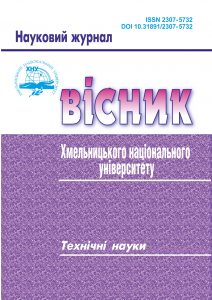KINEMATIC STUDY OF A FOURTH-CLASS MECHANISM WITH THREE TRANSLATIONAL AND OTHER ROTATIONAL KINEMATIC PAIRS
DOI:
https://doi.org/10.31891/2307-5732-2023-329-6-194-198Keywords:
kinematic study, kinematic analysis, velocity vector, velocity plan, linear velocity of a pointAbstract
The structural groups of links, composed of six links and nine kinematic pairs, form the basis for synthesizing a significant number of complex planar mechanisms, such as mechanisms of the third, fourth, fifth, and sixth classes. The investigation of these mechanisms presents certain difficulties as each complex mechanism requires an individual approach to its analysis. It should be noted that for many complex mechanisms of higher classes, a specific sequence of actions needs to be developed. Therefore, new research on such mechanisms is necessary and relevant. A study was conducted on the kinematic parameters of a fourth-class mechanism with one driving link, three translational pairs, and other rotational kinematic pairs. This mechanism is formed by the initial mechanism and the structural group of fourth-class links, where two translational pairs are internal, and one is external. The structural group of fourth-class links forms a closed loop consisting of one translational and three rotational kinematic pairs. In general, the structural group, consisting of six links and nine kinematic pairs, belongs to the group of fourth-class links of the third order and serves as the basis for a complex planar mechanism of the corresponding class. Using the method of conditional structural changes to the actual driving link of the fourth-class mechanism, another conditionally possible sequence was developed, and a kinematic study of the fourth-class mechanism with three translational and other rotational kinematic pairs was carried out. Linear velocity vectors of the mechanism's points were determined. For kinematic investigation, a graph-analytical method was applied, allowing the solution of vector kinematic equations for the fourth-class mechanism in the form of graphical constructions. These constructions were initially performed in an arbitrarily chosen scale and then refined, taking into account the kinematic parameters of the specific study. The obtained research results can be beneficial, particularly for researchers dealing with planar mechanisms of the fourth and higher classes, conducting similar investigations.

